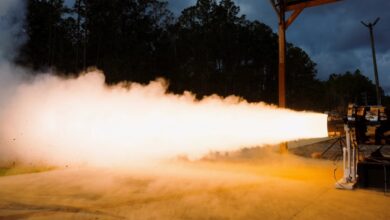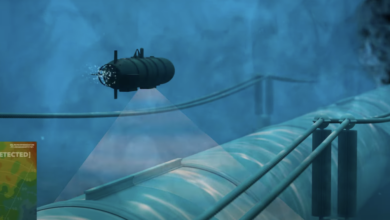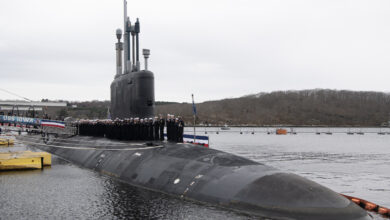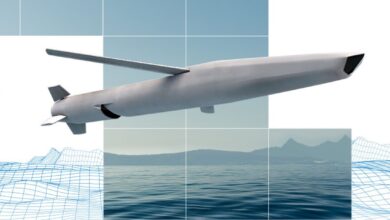The US Navy has completed a program leveraging joint direct attack munitions (JDAM) for littoral mine countermeasure applications.
Throughout the 21-year initiative, navy experts developed a JDAM Assault Breaching System (JABS) to clear mines and associated obstacles before an amphibious assault in a coastal battlespace.
The JABS combines 2,000-pound-class (907 kilograms) guided bombs, usually Mark 84 or BLU-117 general-purpose bombs, with mission planning and lethality database software to aid soldiers in identifying and localizing threats.
Finalizing a 21-Year Effort
The program concluded with a milestone in which the JABS trialed with a foreign anti-landing mine at an operational water depth setting in a shallow water explosive test pond.
It fully validated the system’s performance against various anti-landing and anti-tank mines at different depths and in water conditions that the US Navy could encounter.
The effort was led by the Naval Surface Warfare Center (NSWC) Panama City Division in partnership with the NSWC Indian Head Division, Eglin Air Force Base, and support contractors under Innovative Professional Solutions, Inc.

“For the final test, and the test series in general, we were very happy with everything we have learned as every test helped us understand performance against that mine type, and improved our predictions against future similar targets,” NSWC Panama JABS Project Engineer Jonathan Millhollon stated.
“The final test results are being analyzed and will be delivered… for use in assault breach mission planning.”
“Without the final test, the fleet would have less confidence planning against this threat type, and would either have to accept additional risk to the landing force or drop an excessive number of munitions to be confident that the threats had been cleared.”
Future of the JABS Program
The JABS program was launched in 2002 to seek multiple innovations for secure mine-clearing tasks.
In 2006, the Mark 84 JDAM was selected as the solution for the project and assigned as the dedicated assault breaching capability for the JABS system.
Following more than two decades of work, JABS experts will continue to further enhance the US Navy’s mine countermeasure capabilities.

“[This fiscal year], the program will be transitioning to sustainment,” Millhollon stated. “We are wrapping up the data analysis from FY23, delivering our final lethality prediction curves… and archiving the past decades of data for future reference.”
“During the interim, we will be standing by to support the Surface and Mine Warfighting Development Center as they review the updated JABS tactical memorandum for transition [to] doctrine, and we will maintain a reach-back capability for tactics or software support.”












